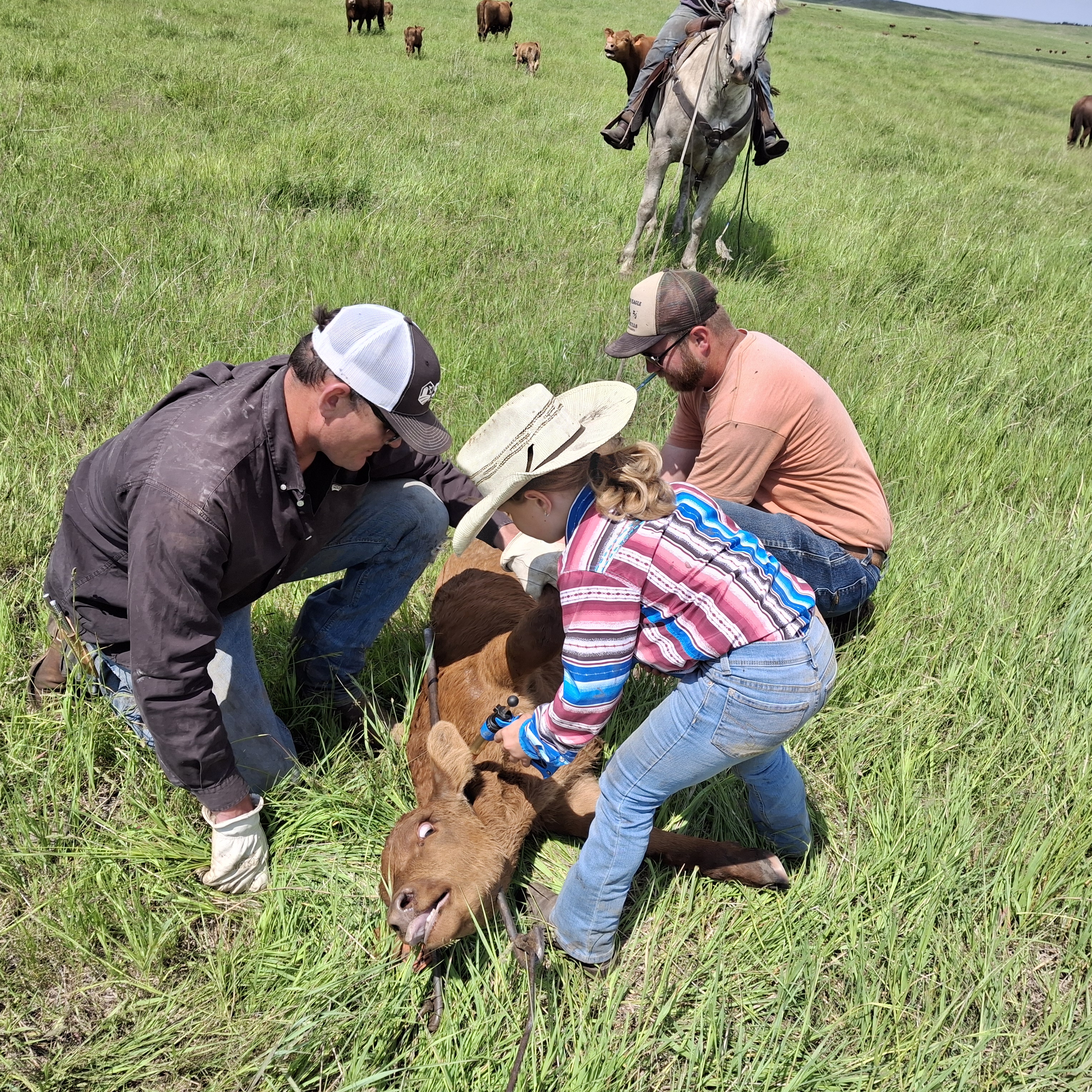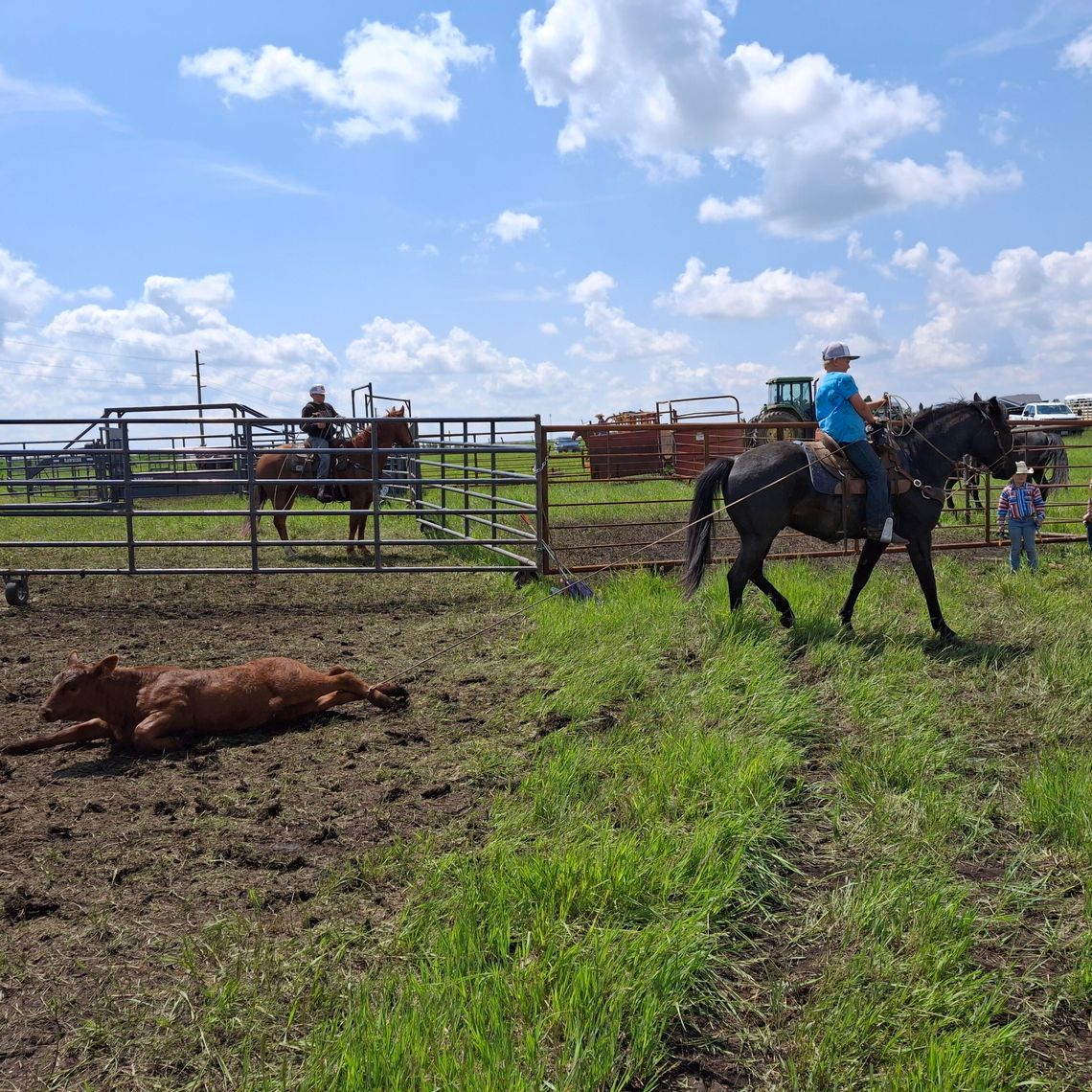
This story continues last week’s feature in the Journal about some area cattle producers turning to traditional methods for working calves.
Some ranchers and cattle producers in northeastern South Dakota have only recently started using the traditional method for branding and vaccinating calves, while others have been relying on it for years.
“We’ve been doing the old-style method for about four years now,” said Cody Schultz, a cattleman from the Lake City area. “It’s a better pace for our operation.” Sam Nordquist, who also runs cattle near Lake City, said their family has used the rope-and-drag method about five times in recent years.
Both producers noted they still use the more modern chute and calf table system when necessary. That method involves pushing calves through an alley into a head gate, where the table can be rotated to perform vaccinations, castration, and other tasks.
But the consensus among ranchers is clear: the rope-and-drag technique is often faster and preferred. “With a calf table, it would take us three or four hours to get through our herd,” said Nordquist. “The branding only took two hours.”
Tyler Hellwig, who ranches near Sisseton, agreed. “With the right crew, you can be working four calves at once. We can get through more than 100 pairs in an hour.”
Ranchers say the rope-and-drag approach also brings other benefits: It’s easier on the cattle, since they’re roped by the back legs and handled more efficiently. Calves experience less stress with quicker handling and fewer movements. The open-air setting helps prevent overheating and offers more flexibility for location.
Nordquist noted that their home pasture is often too muddy to work calves safely. But by using movable panels for branding, the crew can set up in nearly any dry spot. Schultz added that the ability to work cattle in a more open environment keeps animals calmer and more comfortable.
Crews also point out that while calf tables might appear more hands-off, the process of pushing calves up the chute can result in more bumps and bruises than one might expect.
“Though branding seems old-fashioned, we’re still using technology to work calves in the best way possible,” said Courtney Schaefer, a sixth-generation rancher from Sisseton. “Stressed animals don’t make any money.” She added that while the setting may look traditional, producers rely on veterinarian-recommended vaccines and tools like specialized forks, which are used to safely hold calves in place on the ground.
Luke Nordquist noted that his dad, Terry, was initially skeptical of going back to the rope-and-drag method because it was unfamiliar compared to the calf table. “He changed his mind, though, when he saw how many people were willing to come help with branding,” Luke said.
Of course, like all ranch work, this method has its risks. Nate Bien, a cattleman near Veblen, stressed the importance of staying alert. “You have to keep your head on a swivel,” he said. “Riders and the ground crew need to be constantly watching out for each other.”
Hellwig offered a few safety tips of his own: never walk in front of a rope, be cautious around gates, and steer clear if a calf is only roped by one leg. Despite the inherent hazards, he and others say they still prefer this approach to the more mechanical alternative.
“You have to pay for help when using a calf table,” said Schaefer. “But you invite people to a branding.”
Indeed, branding days have long been as much about community as they are about cattle. Schaefer added that the events are educational and practical. “A branding teaches kids about animals and animal husbandry. It’s time spent together, it builds your horse herd, and it builds horse power here in northeast South Dakota by training young horses.”
What may look like a throwback to some is proving to be a highly effective and meaningful practice for many area ranchers—one that blends tradition, teamwork, and good old-fashioned hard work.
Kids are always welcome at brandings, and many of them are already taking on important roles. Ten-year-old Ryker Guy spent part of his summer helping out from the back of his horse. His dad, Zach, is a regular on local branding crews, and Ryker is quite literally learning the ropes. He’s been practicing roping on a dummy and said he really enjoyed putting those skills to the test during real brandings. He’s already looking forward to keeping up the work in the years to come.
Ashley Iliff and her husband, Nate—who is also a veterinarian in Sisseton—often bring their whole family along. That includes their youngest daughter, still in diapers, four-year-old Ember and eight-year-old Ensley, who’s been to so many brandings that she often takes charge of vaccinations.
“People have turned it into time for work and family, and that’s part of why it’s really caught on,” said Ashley.
Crews are almost always fed after the job is done, and there’s typically a fair amount of socializing and catching up afterward. It’s part reunion, part hard labor—and entirely part of life for many local cattle producers.
As Schaefer put it, “How else can you spend the day with your buddies, get fed, improve your horses, and take care of your cattle?”
For cowhands and calves alike, it might just be one of the best days of the year.



